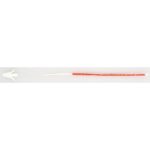With the help of a bycatch estimation tool, there is now a more practical method for stock assessments.

Over the years, Dr. C. Phillip Goodyear, TBF’s billfish scientist has developed “species distribution models” for highly migratory species that estimate time-varying, three-dimensional distribution of habitat. These models are useful in estimating abundances, visualizing stock boundaries and estimating abundance from catch per unit of effort. They incorporate a wide range of biological and environmental data. Examples include depth, annual average estimated total chlorophyll by latitude and longitude, water temperature and oxygen by latitude, longitude, and depth by month and year. This year, Goodyear and a team of scientists led by Elizabeth Babcock, demonstrated that a bycatch estimation tool, created by Babcock, was a practical method to estimate missing catch data needed for stock assessments. The research used Goodyear’s species distribution model and his longline catch simulator to simulate longline catches for Atlantic Blue Marlin and Swordfish. Research using these data showed
Babcock’s estimation tool could effectively estimate the total annual bycatch in the Atlantic pelagic longline fishery using observer data. Advancing this technical research is crucial to accurate determinations of the fisheries and fish stocks that support them.






